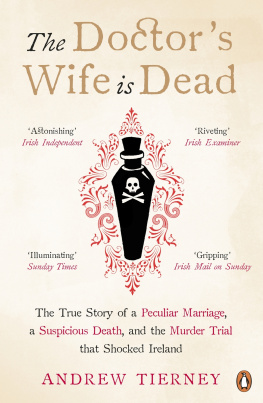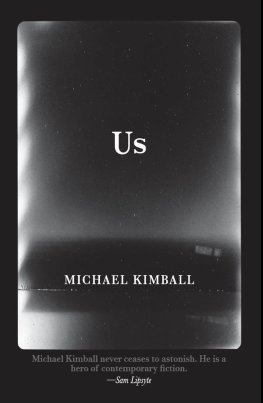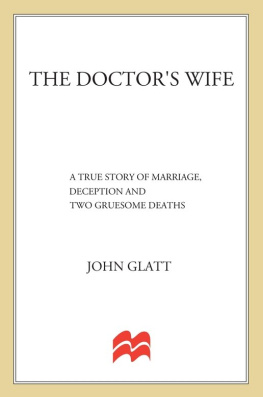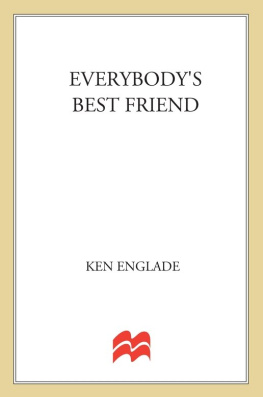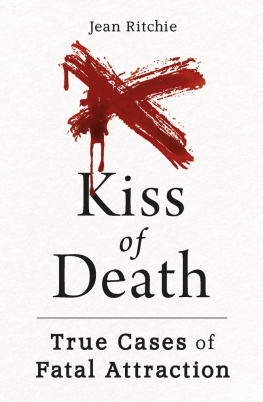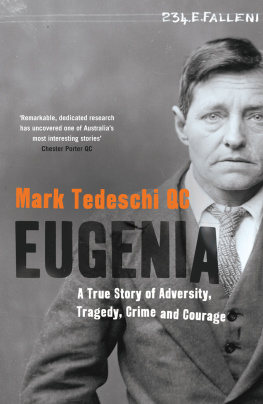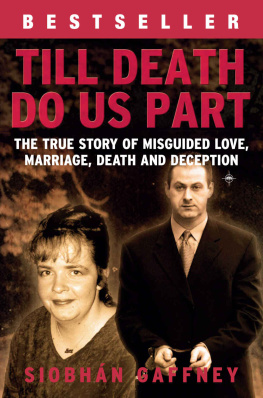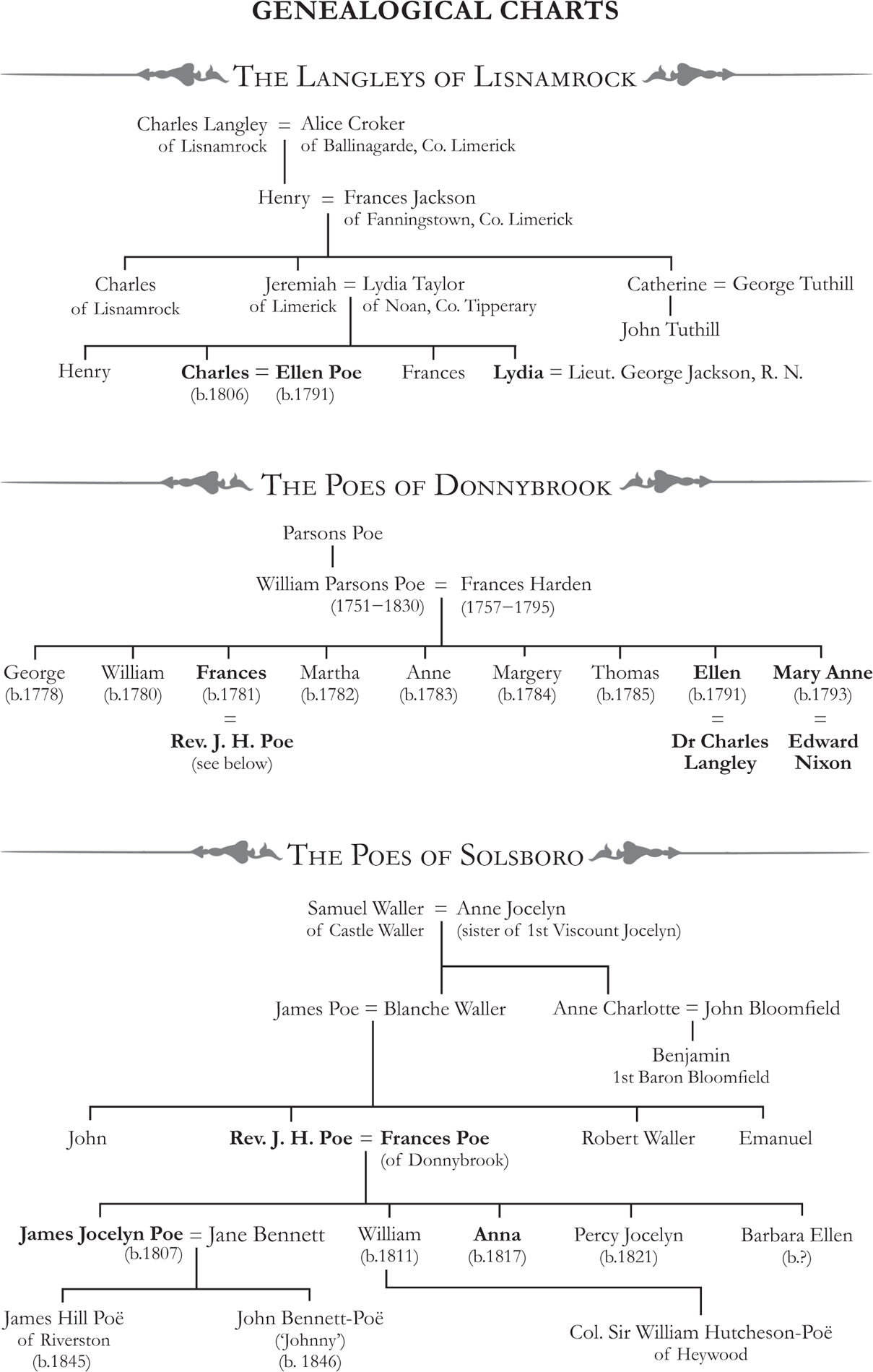Andrew Tierney - The Doctors Wife Is Dead: The True Story of a Peculiar Marriage, a Suspicious Death, and the Murder Trial that Shocked Ireland
Here you can read online Andrew Tierney - The Doctors Wife Is Dead: The True Story of a Peculiar Marriage, a Suspicious Death, and the Murder Trial that Shocked Ireland full text of the book (entire story) in english for free. Download pdf and epub, get meaning, cover and reviews about this ebook. year: 2017, publisher: Penguin Books Ltd, genre: Detective and thriller. Description of the work, (preface) as well as reviews are available. Best literature library LitArk.com created for fans of good reading and offers a wide selection of genres:
Romance novel
Science fiction
Adventure
Detective
Science
History
Home and family
Prose
Art
Politics
Computer
Non-fiction
Religion
Business
Children
Humor
Choose a favorite category and find really read worthwhile books. Enjoy immersion in the world of imagination, feel the emotions of the characters or learn something new for yourself, make an fascinating discovery.
- Book:The Doctors Wife Is Dead: The True Story of a Peculiar Marriage, a Suspicious Death, and the Murder Trial that Shocked Ireland
- Author:
- Publisher:Penguin Books Ltd
- Genre:
- Year:2017
- Rating:3 / 5
- Favourites:Add to favourites
- Your mark:
The Doctors Wife Is Dead: The True Story of a Peculiar Marriage, a Suspicious Death, and the Murder Trial that Shocked Ireland: summary, description and annotation
We offer to read an annotation, description, summary or preface (depends on what the author of the book "The Doctors Wife Is Dead: The True Story of a Peculiar Marriage, a Suspicious Death, and the Murder Trial that Shocked Ireland" wrote himself). If you haven't found the necessary information about the book — write in the comments, we will try to find it.
A mysterious death in respectable society: a brilliant historical true crime story
In 1849, a woman called Ellen Langley died in Nenagh, Co. Tipperary. She was the wife of a prosperous local doctor. So why was she buried in a paupers coffin? Why had she been confined to the grim attic of the house she shared with her husband, and then exiled to a rented dwelling-room in an impoverished part of the famine-ravaged town? And why was her husband charged with murder?
Following every twist and turn of the inquest into Ellen Langleys death and the trial of her husband, The Doctors Wife is Dead tells the story of an unhappy marriage, of a mans confidence that he could get away with abusing his wife, and of the brave efforts of a number of ordinary citizens to hold him to account. Andrew Tierney has produced a tour de force of narrative nonfiction that shines a light on the double standards of Victorian law and morality and illuminates the weave of money, sex, ambition and respectability that defined the possibilities and limitations of married life. It is a gripping portrait of a marriage, a society and a shocking legal drama.
An astonishing book ... a vivid chronicle of the unspeakable cruelty perpetrated by a husband on his spouse at a time when, in law, a wife was a mans chattel Damian Corless, Irish Independent
Opens in gripping style and rarely falters ... fascinating and well researched Mary Carr, Irish Mail on Sunday (5 stars)
Truly illuminating ... Tierneys exploration of the cases influence on Irish and English lawmaking and literature is particularly intriguing, drawing comparisons with Kate Summerscales similar work in The Suspicions of Mr Whicher Jessica Traynor, Sunday Times
Riveting ... meticulously researched and deftly told Irish Examiner
A nonfiction work with the pulse of a courtroom drama ... Tierneys book is a moving account of Ellen Langleys squalid last days, but its also a study of Famine-era Irish society. Men dominate, be they grimly professional gents in tall hats and grey waistcoats or feckless scoundrels using women as chattel Peter Murphy, Irish Times
A dark tale of spousal abuse, illicit sex and uncertain justice, set against a backdrop of poverty and privilege, marital inequality and the deep religious divide between Catholics and Protestants. Tierney is an archaeologist, and his skill in unearthing the past is on display as he digs deep into the historical record of a murder case so shocking and controversial that it was debated in parliament. ... Tierney writes with passion ... and deftly weaves a plot thats filled with surprising twists and turnsHistory Ireland
Andrew Tierney: author's other books
Who wrote The Doctors Wife Is Dead: The True Story of a Peculiar Marriage, a Suspicious Death, and the Murder Trial that Shocked Ireland? Find out the surname, the name of the author of the book and a list of all author's works by series.

